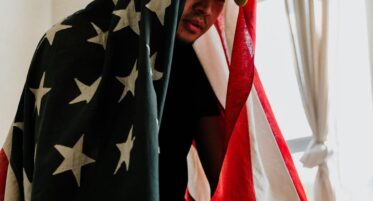Prompt Images
Liberté, Égalité, Fraternite, and Mary-Kate and Ashley: Critical Analysis of Passport to Paris
Casablanca. Gone with the Wind. Apocalypse Now. These timeless films made their location into a primary character, one which is not only the setting of the film’s action, but also represents greater themes evoked by such action. Another film which falls into this category is the 1999 Mary-Kate and Ashley Olsen direct-to-video vehicle, Passport to Paris.

Here’s a quick synopsis of the plot, for those of you who were not 6 years old in 1999 and having to constantly reaffirm your role as Mary-Kate when you played MK & A at recess:
Melanie and Allyson (MK & A, playing their coolest named characters) are sent to Paris for a week to stay with their grandfather, who is the U.S. Ambassador to France. The twins galavant around Paris under the supervision of Jeremy, one of their grandfather’s low-level staffers, and fall in love with two French boys. (Swoon.)
You might be surprised to learn that this movie is shockingly political (and full of product placement) for a straight-to-VHS number. I’ll provide a brief overview of the topics covered in this critical masterpiece, including diplomacy, environmental activism, fine arts, international cuisine, feminism, and commercialism.
Diplomacy
Perhaps chosen to mirror the famed Treaty of Paris, which ended the American Revolution and recognized the United States as an independent nation, Melanie and Allyson must recognize their differences with the embassy chef, and try cuisine from each other’s respective nations. Melanie and Allyson try escargot, and Henri the Chef tries McDonald’s. This scene includes one of the best lines in the movie, when Henri tries to eat the burger with a fork and knife, and the twins correct him: “It’s a HAND-burger. You eat it with your hands!” The compromise is powerful, and the scene poignant.
Environmental Activism
The film culminates with a state dinner at the Paris embassy, where Melanie and Allyson confront the French foreign minister about clean drinking water for the embassy/city. The preteens Melanie and Allyson demonstrate knowledge and public speaking skills, as well as an acute awareness for environmental issues like dirty water and air. When I traveled to Austria with my family when I was 7 years old, I was concerned about drinking from the tap because of this movie.
Fine Arts
When Melanie and Allyson visit the Louvre, the paintings literally fly off the walls and surround them. They immerse themselves in the art so completely that they must have a mastery of the Louvre’s collection. Their dedication to the arts is admirable, compared to my dad, who called our day at the Louvre “a borderline waste of a day.” Paris’s opportunities for cultural enrichment provide Mel and Ally with new ideas and appreciation for what they can’t understand.
Cuisine & Culture
Not only do the girls demand and consume McDonald’s, they also order Domino’s one night after whining about the allegedly gross French food. Was this the director’s subtle comment about the sweeping commercialization and Americanization of foreign nations? Or simply a cash grab for the Olsen twins?
And I couldn’t write about Passport to Paris without mentioning the best scene in the entire film: Jean describes the difference between French girls and American girls. True cinematic gold.
Feminism
The Olsen twins have their first onscreen kisses in this movie, with two French gentleboys named Jean and Michel. Note the beret and turtleneck. They are clearly French. In this scene, the girls must break the bad news that their grandfather grounded them, so that they’ll be unable to attend the dance with the boys. However, they suggest the boys bring other dates, since they are not about tearing down other women. The movie also features a subplot involving the girls meeting a supermodel named Brigitte, who teaches the girls to follow their careers and that they don’t need to get married. This movie most certainly passes the Bechdel test. #feminism
Overall, Paris provides both an escape from the grind of American middle school for Melanie and Allyson, as well as a sobering window into the world of international politics and adult life. Paris is, at times, a prison for the girls: a place to which they have been banished. At the beginning of the film Melanie and Allyson resent the trip, as they wish to stay home and go to the Spring Fling dance with their American crushes.
And, when their grandfather forbids them from seeing Jean and Michel, Paris again feels like a punishment. However, when Melanie and Allyson explore the city with Jeremy, and later, go shopping with Brigitte, Paris’s open cafe settings, sweeping garden shots, and other notable landmarks represent Melanie and Allyson’s independence, and their delight in both the city itself and maturing, emotionally.
By the end of Passport to Paris, the girls gain a new appreciation for the human experience, having their minds broadened by French cuisine, international issues, French crushes, art, feminist attitudes, and the general joie de vivre of the City of Lights. The superficial glamour of Paris, and the perceived isolation the girls felt at the beginning of the film melted away as their experiences deepened. The role of Paris in the development of Melanie and Allyson’s independence is equally as important as its role in the development of revolutionary politics, from the Americans to the French themselves. Not many other direct-to-video programs can boast such a sweeping message.
And finally, the Olsen twins had their best haircuts of any of their media, before or since.
I assume I am now awarded a Ph.D. in Olsen Studies. It’s Dr. Vail to you, now.



